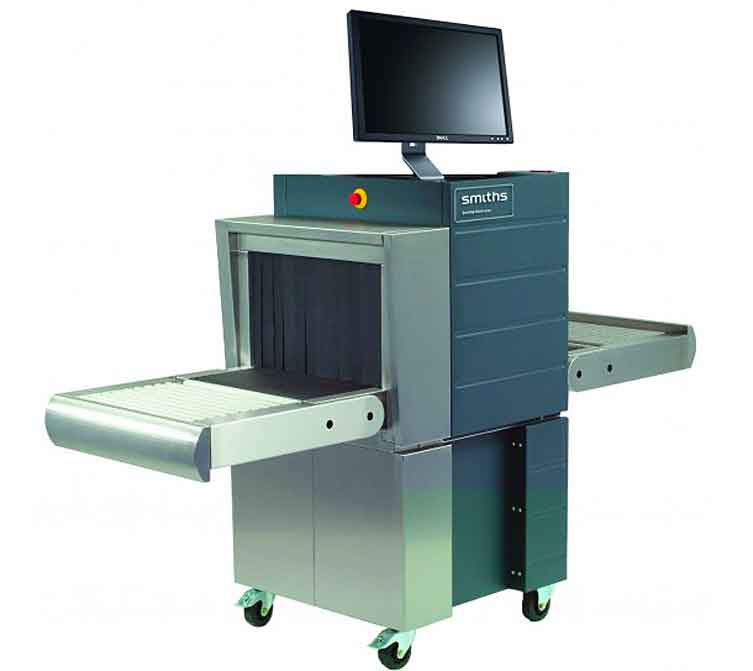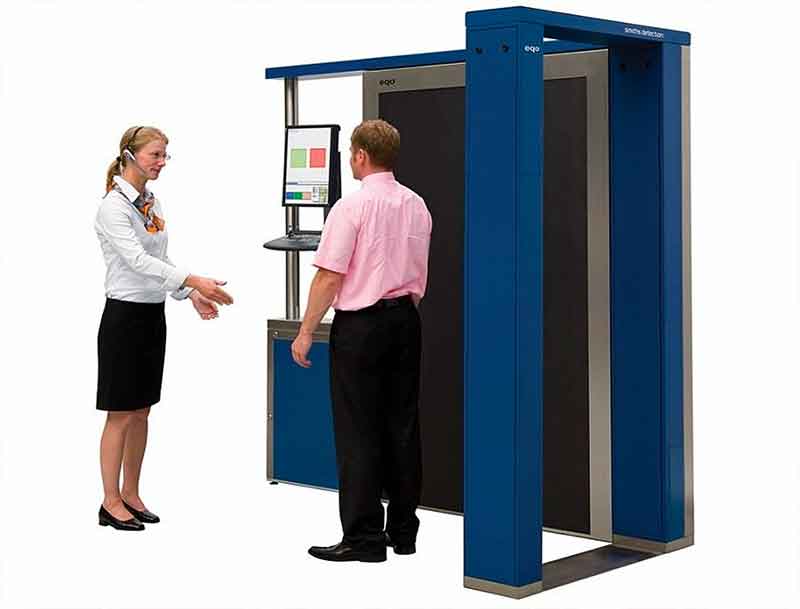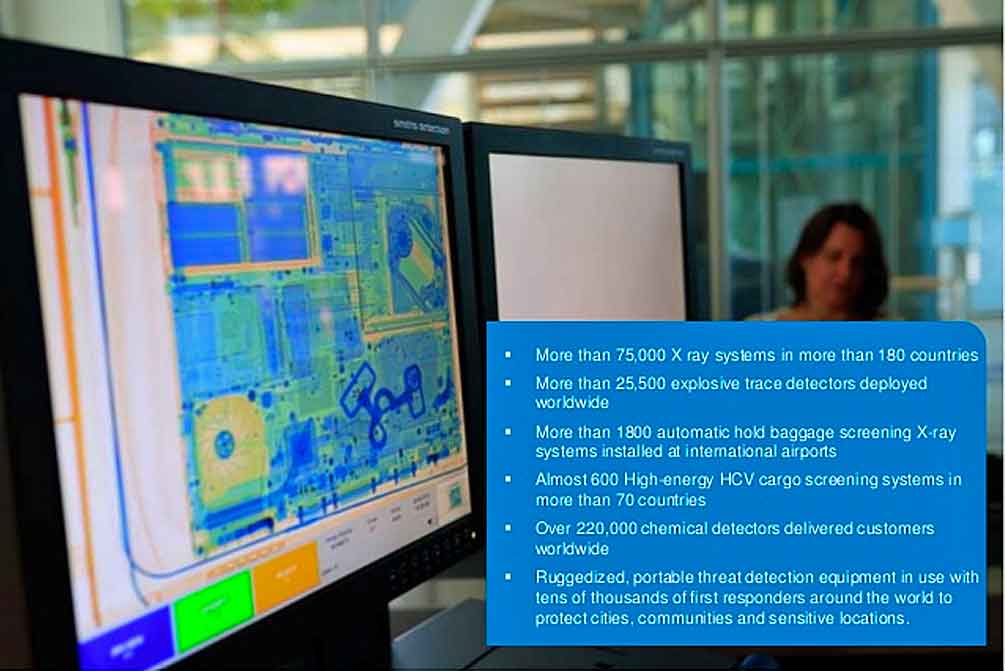Guest OpEd by Stephen Esposito, Vice President, Smiths Detection Inc.
Nearly 1 in 3 Americans spend each day of the academic year in a school building.
With such a large percentage of our population on pre-K to postgraduate campuses throughout the nation, school security is a paramount concern.

Unfortunately, often times the discussion around best school security practices is framed within the context of tragedy.
The deadliest K-12 grade school shooting in history still comes quickly to mind – the December 2012 shooting in Sandy Hook, CT.
Yet there have been at least 290* school shootings in America since then, including the most recent mass school shooting at Stoneman Douglas High School in Parkland, FL that claimed 17 lives – that’s nearly one every ten days.
A significant percentage of educational and healthcare campuses have announced they made, or plan to make, security upgrades in response to the rise in school violence; everything from hiring more security personnel to installing safety and security technologies, such as such as metal detectors and shatter resistant window film.

Investments in making schools safer always pay off.
Knowing the differences in the types of security programs; the role technology can play, and acknowledgement that a range of safety measures are most effective, helps officials have the right conversations with school boards, parents, and students.
The unfortunate reality
There is no doubt that schools and campuses should be safe havens where students can learn and engage freely and openly.
Yet, despite increased awareness on subjects like bullying, proper social media usage to better access to mental health services, the question remains “are schools, in fact, safer?”
“Mommy, I’m okay, but all my friends are dead.”
A 6 year old girl was the only survivor in her classroom. She survived by playing dead.#SandyHook massacre was 5 years ago today. 20 children between 6-7 years old and 6 adults were shot to death.https://t.co/Ub2PTbm2LW pic.twitter.com/V2lzxltXEQ
— Leah McElrath (@leahmcelrath) December 14, 2017
Where do we need to go from here?
A multi-layered approach
For schools and other secured environments, evidence points to positive trends in safety when a broad, all-inclusive plan of overlapping layers of physical security is used in combination with other programs.
We should not rule out anything when it comes to ensuring the safety of our children, teachers and administrators.
While we know that unfortunately nothing can guarantee 100 percent safety, when multiple layers or solutions are used we achieve better results on safety and violence prevention.
Firstly, when considering a physical security approach, educators must take into consideration the unique environment, traffic, population and campuses, which can be as varied as a rural elementary school; university campuses with 10,000-plus enrollment; to schools of all grade levels in the most-populous U.S. cities, or in cities throughout the U.S. facing high levels of violent crime.

Some layers of security might make sense for one that do not fit in another.
In some environments, physical security could include more vehicle barriers, alarm systems and metal detection.
X-ray can be effective in other environments, as it is a proven and trusted tool which prevents and intercepts contraband, like weapons and narcotics of all shapes and sizes, from getting into secured facilities.
Resources may also include school resource officers (SROs), sworn law enforcement officers responsible for school security, and crime prevention services.
(Smiths Detection HI-SCAN 5030si Table-top X-ray inspection system for instance, is a modular table top system, ideal for threat detection in mailrooms, entrance halls, schools and prisons to detect contraband, weapons, narcotics and more. Courtesy of Smiths Detection and YouTube.)
Helping lead the way to safer schools
According to another survey of school principals reported by the National Center for Education Statistics, about 10 percent of high schools, 7 percent of middle schools, and 2 percent of primary schools in the United States did random checks with metal detectors in 2015-2016.

Surveys also show that when metal detectors were installed, their presence nearly halved the number of students who reported carrying a weapon while in school, down to 7.8 percent from 13.6 percent.
While less than a quarter of our nation schools have deployed such techniques, these institutions are having the right conversations with communities.
They are making the needed investment in new ways to supplement their school security programs.
There are a broad ranges of applications for X-ray and metal detection systems for schools and college campuses.
For example, one major US city shares its public school’s X-ray fleet to conduct random screening at various schools across their district.
While another school uses metal detection at every entry point for student and visitor screening, every day.
A college, on the other hand, sets up a temporary X-ray and metal detection checkpoint for major events such as basketball games and concerts.
(See how the eqo system operates within a minimal footprint and can be easily integrated into any current checkpoint configuration. Courtesy of Smiths Detection and YouTube.)
The importance of experience
Security professionals from all disciplines can help school administrators, boards, and SROs assess and apply the appropriate physical security technologies for their school and college grounds.
Most importantly, school administrators need to continue an open dialogue with their communities about their concerns and wants, so developing procedures and practices can be increasingly customized to meet their needs.
For example, the usual combination of baggage X-ray screening and walk-through metal detectors you see throughout governmental and public safety institutions, are designed for high-volume traffic.
These solutions allow for non-intrusive inspection of baggage, are able to search for a broad combination of things, and feature upgradable platforms to enable institutions to maximize their investments for years to come.
Working with local police departments, architectural firms, and original equipment manufacturers will further help school administrators apply them in the most effective way.
Addressing the investment
When considering a multi-layered approach, cost is obviously a factor in the decision-making process for schools, and X-rays and metal detectors are absolutely a worthwhile discussion, among other technologies including locking systems and communication solutions.
Technological solutions have a long lifespan of value.
Schools and higher education institutions in need of adding a layer of screening technology to their security program may need to seek funding sources from federal and state grants.
Selecting a solution that applies to different settings, be it population size, traffic, at a sporting event or every day, increases its effectiveness over the long haul.
(See how Smiths Detection can support you security objectives to help keep your property and patrons safe with our layered approach to security, for example in the hospitality sector. Courtesy of Smiths Detection and YouTube)
Conclusion
Technology is not the only answer to better protecting our schools, but it has an important role to play in physical security.

Schools have taken on a lot of steps in the nearly 20 years since the tragedy at Columbine, and since the attack in Sandy Hook, to continue to bolster their security systems and options.
The advanced technologies that are in use every day in diverse federal and international capacities, protecting airline passengers, corporate headquarters, and government employees, have been adapted to fit settings such as schools where needed.
While nothing offers 100 percent protection, the presence of new technology promises to help reduce the rate of contraband brought onto school campuses helping make a safer place where students can thrive.
About the Author:
Stephen Esposito, Vice President Business Development, Sales and Marketing, Smiths Detection Inc.

With the completion of the acquisition of Morpho Detection, Stephen was asked to provide stability and focus to this expanded business development, sales and marketing team for the Americas.
Prior to that, Stephen served as Vice President and General Manager for the Americas region, Interim President, Smiths Detection Inc., and was responsible for driving revenues and profitability while leading the business in support of government and commercial customers.
Smiths Detection excels at developing government regulated advanced technologies used in threat detection equipment to detect and identify constantly evolving chemical, biological, radiological, nuclear and explosive (CBRNE) materials, contraband and dangerous or illegal materials.
- TIME, http://time.com/5168272/how-many-school-shootings/
- 90% of nation’s public high schools reported a violent incident in the 2015-2016 school year (Figure 6.2) https://nces.ed.gov/programs/crimeindicators/ind_06.asp
- Percentage of schools with security personnel on campus at least once a week https://nces.ed.gov/programs/digest/d17/tables/dt17_233.70.asp
- Percentage of students threatened/injured with a weapon on school property https://nces.ed.gov/programs/crimeindicators/ind_04.asp
- Carrying weapons on school property https://nces.ed.gov/programs/crimeindicators/ind_14.asp
- Schools using metal detectors (random or daily) https://nces.ed.gov/programs/digest/d17/tables/dt17_233.60.asp
- Percentage of schools doing random checks with metal detectors https://nces.ed.gov/fastfacts/display.asp?id=334
- Students who avoided class/activities/area of the school for fear of an attack (Figure 18.1) https://nces.ed.gov/programs/crimeindicators/ind_18.asp#fig_18_1
- Students who carry a weapon in schools with metal detector vs those without https://www.cdc.gov/mmwr/preview/mmwrhtml/00022011.htm

















